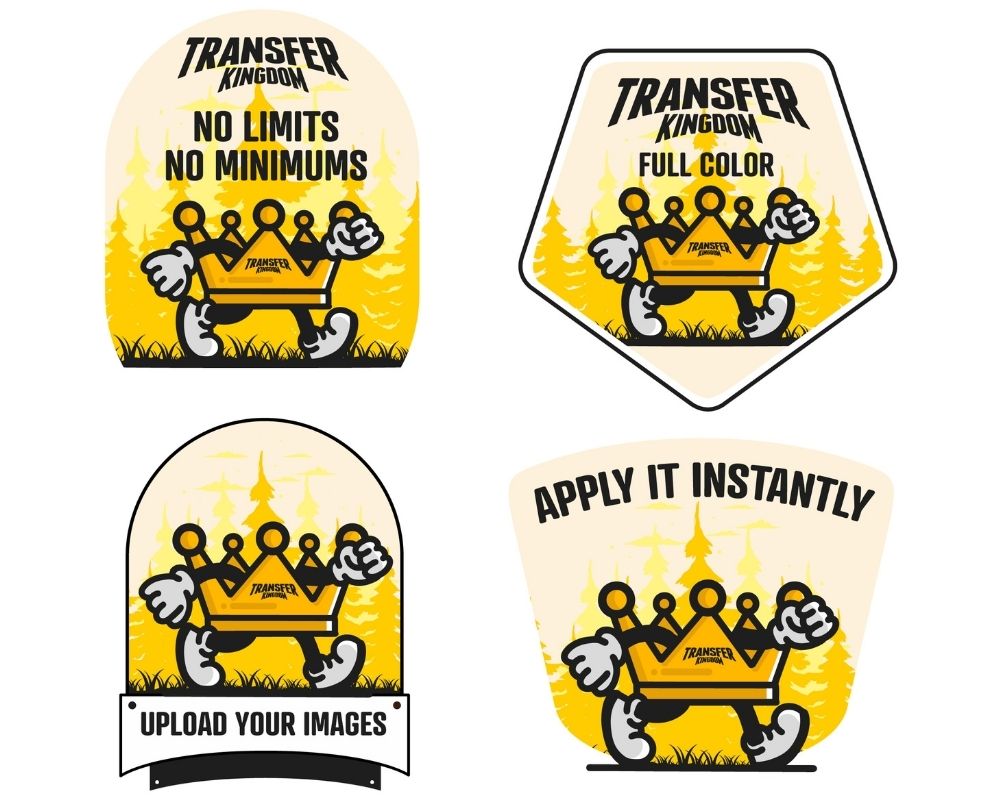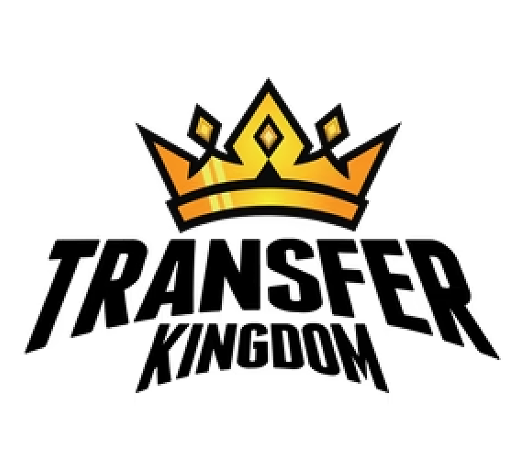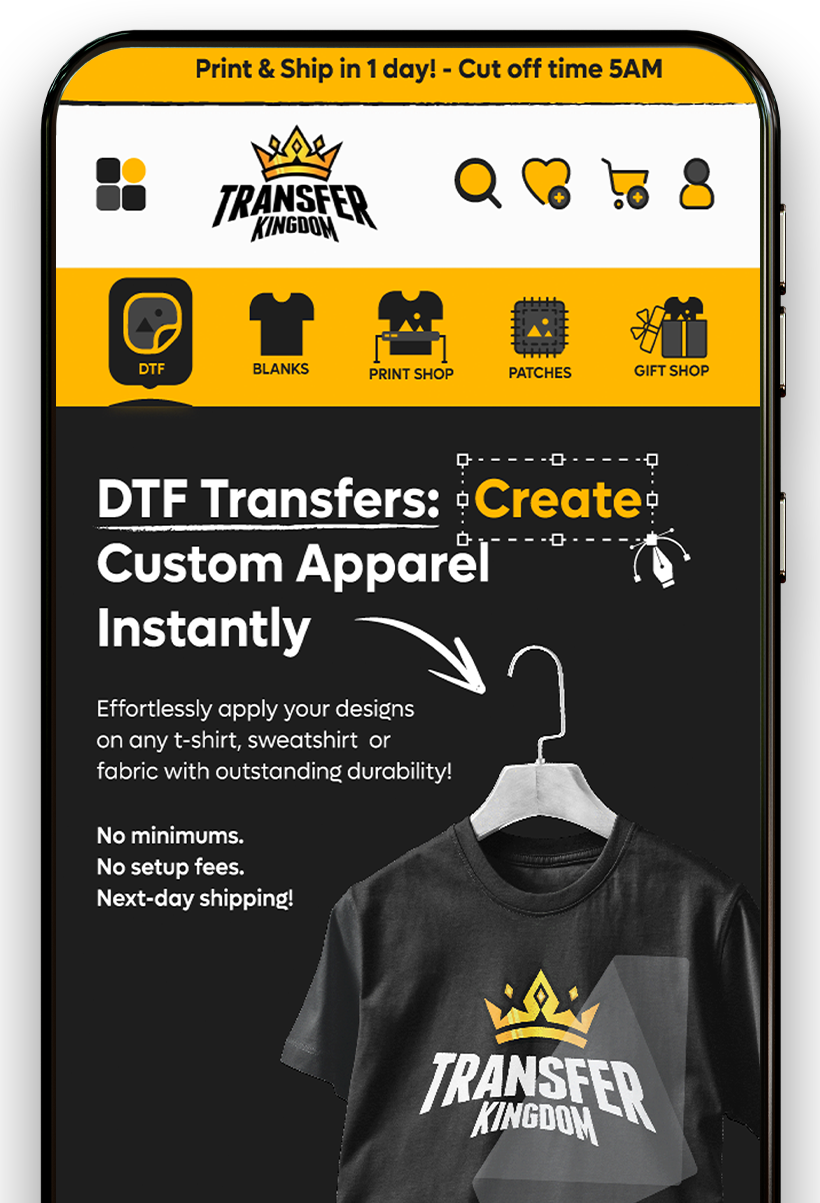How to Make Quality T-Shirts for Less: Cheapest Custom Printing Options in 2025

Why Affordable T-Shirt Printing Matters in 2025
Looking to save money while producing quality t-shirts? In 2025, there are more affordable printing methods than ever before—ranging from DTF transfers to bulk screen printing. This guide breaks down the cheapest custom printing options, compares their pros and cons, and shows you how to maximize value without cutting corners on durability or design quality.
The custom apparel market continues to grow as small businesses, online sellers, and event organizers look for low-cost ways to produce quality t-shirts. But with so many printing techniques available, it’s easy to waste money on the wrong option.
By choosing the cheapest custom printing options that still deliver durability and vibrant designs, you can:
Increase profit margins on reselling
Create affordable uniforms for teams, events, or schools
Launch merch lines with lower upfront investment
Cheapest Custom Printing Options in 2025
1. Direct-to-Film (DTF) Transfers
One of the most cost-effective printing methods in 2025, DTF transfers allow you to print high-quality, full-color designs without large setup fees.
Why DTF is Cheap & Effective:
Works on cotton, polyester, blends, denim, and more
No minimum order quantities
Durable with vibrant colors
Quick turnaround with ready-to-press transfers
Best for: Small businesses, TikTok/Etsy sellers, and creators who want to test multiple designs without bulk orders.
2. Screen Printing in Bulk
Screen printing remains one of the cheapest ways to print large quantities of t-shirts. While setup costs are higher, the price per shirt drops dramatically for bulk orders.
Pros:
Long-lasting prints
Economical for 50+ shirts
Works well for simple designs and solid colors
Cons:
Expensive for small runs
Limited for photo-realistic designs
Best for: Events, sports teams, schools, and businesses ordering in bulk.

3. Heat Transfer Vinyl (HTV)
HTV is an affordable option for simple designs, names, and numbers. It’s often used for custom sports jerseys or one-off projects.
Pros:
Low startup costs
Great for personalization (names/numbers)
Works with a home heat press or iron
Cons:
Not ideal for complex or full-color designs
Less durable than screen printing or DTF
Best for: Small personalized orders or DIY projects.
4. Sublimation Printing
Sublimation is cheap for polyester shirts, especially in all-over prints. However, it doesn’t work well on cotton.
Pros: Vibrant, permanent designs Great for full-coverage artwork Affordable for polyester apparel Cons: Requires 100% polyester or poly-coated fabrics Limited to light-colored garments Best for: Sportswear, performance shirts, and promotional giveaways.
5. Print-on-Demand Services
For those who want zero upfront costs, print-on-demand (POD) platforms are a budget-friendly choice.
Pros:
No bulk inventory required
Easy to integrate with Shopify, Etsy, or Amazon
Affordable for testing designs
Cons:
Higher per-shirt cost compared to bulk
Less control over quality and shipping times
Best for: Beginners, online sellers, or testing new designs.

Cost Comparison: Cheapest Printing Methods in 2025
| Printing Method | Best For | Cost Per Shirt (Approx.) |
|---|---|---|
| DTF Transfers | Small runs, full color | $3 – $6 |
| Screen Printing | Bulk orders | $2 – $4 (50+ shirts) |
| HTV | Names/numbers | $5 – $8 |
| Sublimation | Polyester apparel | $4 – $7 |
| Print-on-Demand | Online sellers | $10 – $15 |
Tips to Save More on T-Shirt Printing
Order in Bulk When Possible – Screen printing costs drop significantly at higher volumes.
Use Ready-to-Press Transfers – DTF transfers let you avoid setup costs.
Choose Simple Designs – Fewer colors = lower cost in screen printing.
Mix Methods – Use DTF for complex designs and HTV for simple personalization.
Compare Suppliers – Prices vary widely between local print shops and online services.
Also, don’t forget to negotiate pricing whenever possible. Many print shops, especially smaller or independent ones, are open to offering discounts for repeat customers or larger contracts. Building a long-term relationship with a supplier can save you money over time. Another way to cut costs is by ordering blank t-shirts in bulk from wholesalers and then sending them directly to your printer. This often comes out cheaper than paying the printer’s retail price for blanks. If you’re running a business, consider batching your orders instead of printing small runs every week. Consolidating jobs means fewer setup fees, faster turnaround, and better unit pricing, which all add up to serious savings in the long run.
What’s the absolute cheapest way to print t-shirts in 2025?
Bulk screen printing is still the cheapest per-shirt method, but for small runs, DTF transfers are the most affordable.
Is DTF cheaper than DTG (Direct-to-Garment)?
Yes, DTF transfers usually cost less and work on more fabric types than DTG printing.
Can I use a home iron for DTF transfers?
Yes, but a heat press gives more consistent results.
Are sublimation shirts cheaper than cotton prints?
Sublimation is cheaper only if you’re printing on polyester shirts in bulk.
What’s the most durable cheap method?
Screen printing and DTF transfers both offer excellent durability.
Is print-on-demand worth it for cheap t-shirts?
POD is cheap upfront but more expensive per shirt. It’s best for low-risk testing.
How much can I sell a custom t-shirt for?
Most sellers charge $20–$35 depending on design complexity and brand positioning.
Can I mix printing methods on the same shirt?
Yes—many businesses combine DTF with HTV for affordable personalization.
Do bulk orders always save money?
Yes, bulk discounts apply to screen printing and sublimation, but not POD.
What’s the best method for small businesses in 2025?
DTF transfers are the top choice for small businesses due to low setup costs and high print quality.






